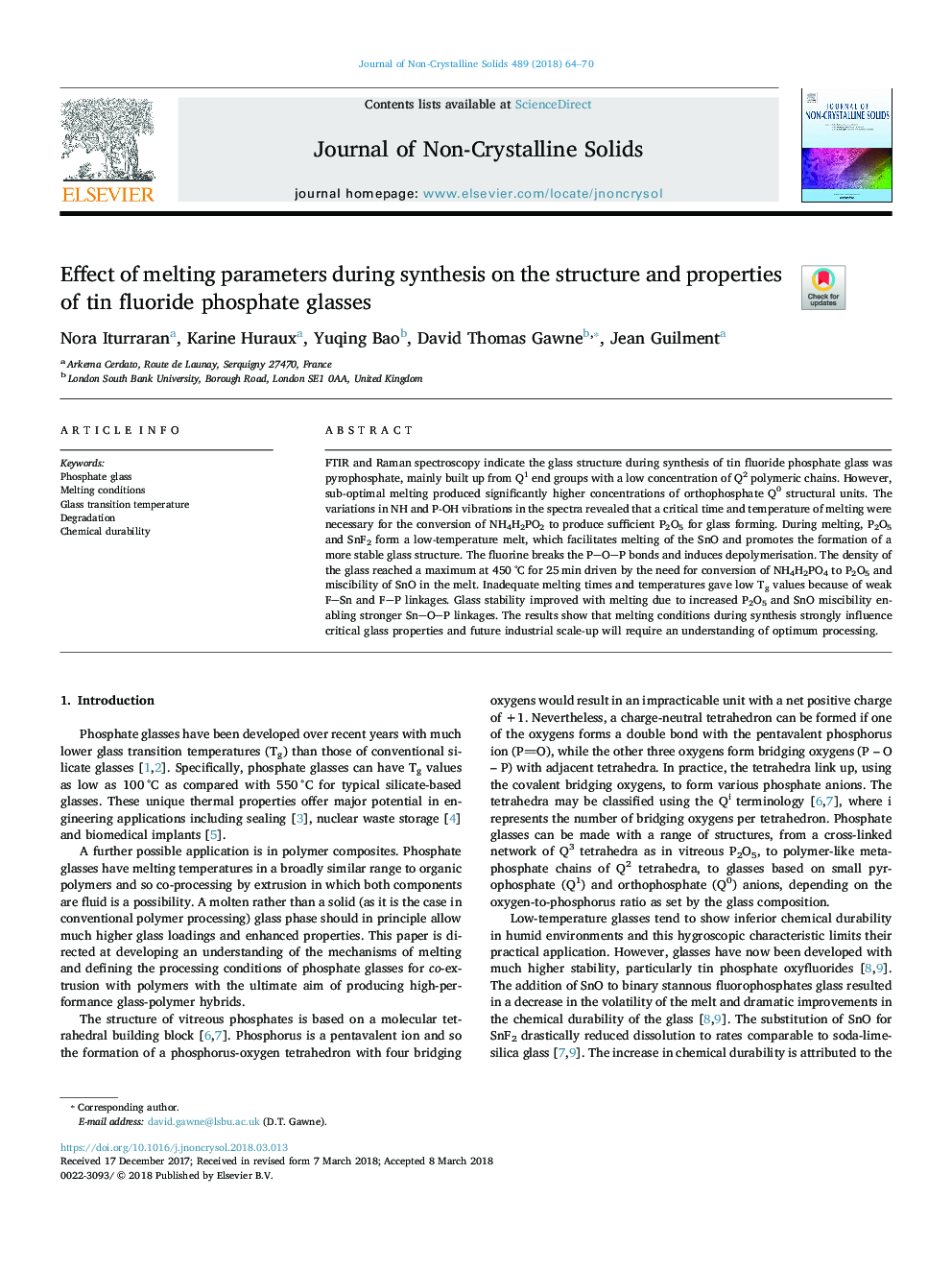| کد مقاله | کد نشریه | سال انتشار | مقاله انگلیسی | نسخه تمام متن |
|---|---|---|---|---|
| 7899988 | 1510358 | 2018 | 7 صفحه PDF | دانلود رایگان |
عنوان انگلیسی مقاله ISI
Effect of melting parameters during synthesis on the structure and properties of tin fluoride phosphate glasses
ترجمه فارسی عنوان
اثر پارامترهای ذوب در هنگام سنتز بر ساختار و خصوصیات عینک فسفات قلع
دانلود مقاله + سفارش ترجمه
دانلود مقاله ISI انگلیسی
رایگان برای ایرانیان
کلمات کلیدی
شیشه فسفات شرایط ذوب، دمای انتقال شیشه، تنزل، دوام مواد شیمیایی،
موضوعات مرتبط
مهندسی و علوم پایه
مهندسی مواد
سرامیک و کامپوزیت
چکیده انگلیسی
FTIR and Raman spectroscopy indicate the glass structure during synthesis of tin fluoride phosphate glass was pyrophosphate, mainly built up from Q1 end groups with a low concentration of Q2 polymeric chains. However, sub-optimal melting produced significantly higher concentrations of orthophosphate Q0 structural units. The variations in NH and P-OH vibrations in the spectra revealed that a critical time and temperature of melting were necessary for the conversion of NH4H2PO2 to produce sufficient P2O5 for glass forming. During melting, P2O5 and SnF2 form a low-temperature melt, which facilitates melting of the SnO and promotes the formation of a more stable glass structure. The fluorine breaks the POP bonds and induces depolymerisation. The density of the glass reached a maximum at 450â¯Â°C for 25â¯min driven by the need for conversion of NH4H2PO4 to P2O5 and miscibility of SnO in the melt. Inadequate melting times and temperatures gave low Tg values because of weak FSn and FP linkages. Glass stability improved with melting due to increased P2O5 and SnO miscibility enabling stronger SnOP linkages. The results show that melting conditions during synthesis strongly influence critical glass properties and future industrial scale-up will require an understanding of optimum processing.
ناشر
Database: Elsevier - ScienceDirect (ساینس دایرکت)
Journal: Journal of Non-Crystalline Solids - Volume 489, 1 June 2018, Pages 64-70
Journal: Journal of Non-Crystalline Solids - Volume 489, 1 June 2018, Pages 64-70
نویسندگان
Nora Iturraran, Karine Huraux, Yuqing Bao, David Thomas Gawne, Jean Guilment,
